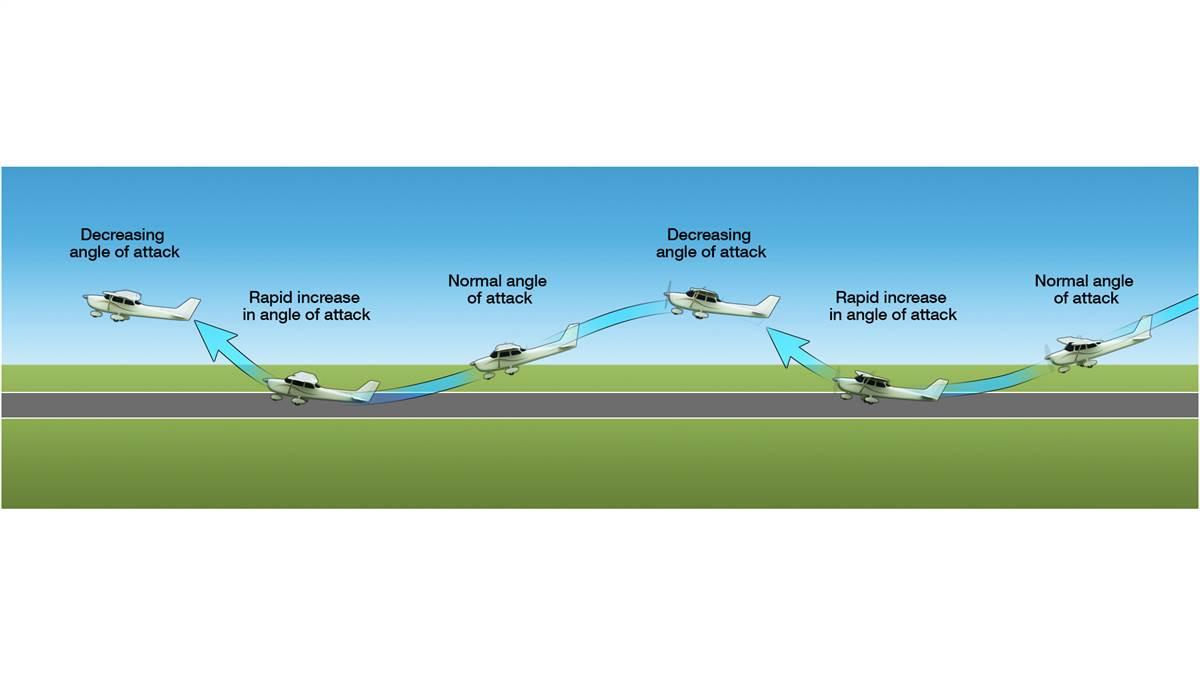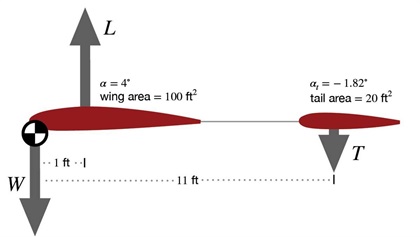Flying Smart: Push-pull
Anatomy of a pilot-induced oscillation

If adding five knots seems like a good idea, then perhaps 10 knots is even better. At the flare, pulling back on the yoke results in a ballooning effect because of the extra airspeed.
Now with a high pitch attitude and decreasing airspeed, the pilot pushes forward on the yoke only to be staring at the ground nearby. Touching down flat or nose first, the airplane bounces back into the air. The pushing and pulling continue while the oscillations worsen, until the nosewheel contacts the ground first and collapses.
While these accidents don’t typically involve fatalities, they can prove devastating to aircraft and bruise pilot egos. Let’s dissect an aircraft longitudinal oscillation and discuss a remedy not easily found in training manuals. Better yet, we’ll see how to avoid them from the start.
If an aircraft in flight is disturbed by a gust of wind or by a misuse of the controls, it will typically experience a superposition of two pitching motions called phugoid and short period oscillations. These two oscillations are essentially independent, meaning that they can be analyzed separately.
The phugoid oscillation features a constant angle of attack and changing airspeed and altitude. After trimming the aircraft for cruise configuration in my Cessna 152, I calculated the period—the time it takes the aircraft to pitch up through equilibrium position again after completing one cycle—to be roughly 24 seconds. For this reason, it’s also called the long period oscillation. FAA Part 23 certification requirements don’t require that this oscillation be stable, but any instability should not be distracting or go beyond the abilities of a normal pilot to assist the airplane setting back to its equilibrium. With a well-defined horizon, a pilot can probably do this without much trouble. In instrument conditions, though, that would be a tall order so many general aviation aircraft feature a stable phugoid although the damping can be light. Think of an aircraft with a stable phugoid oscillation as one that features airspeed stability.
The short period oscillation involves constant airspeed and changing angle of attack and it must be stable for aircraft certified under Part 23. In my Cessna the period of this oscillation appears to be just a fraction of a second with damping forces so great that it’s easy to miss the oscillations altogether. Flying an aircraft with an unstable short period oscillation would be akin to standing on a basketball, and accruing ice in flight can result in an unstable short period oscillation. Consider short period stability as angle of attack stability (see “Angle of Attack Stability,”sidebar).
Let’s return to the pilot landing in gusty conditions. Using a higher approach speed than necessary, the landing will require both more time and distance. And pulling back too much in the flare starts the ballooning process. If the attendant phugoid oscillation is stable, the aircraft will tend to return to its trim condition without any help. So, a nervous pilot who pushes forward likely exacerbates the oscillation instead of helping it settle and thereby gets out of phase with the aircraft. It’s awfully easy to do.
Instead of pushing while the nose is high and pulling when it’s low, an optimal technique would involve pulling on the yoke when the nose is falling through its equilibrium position and pushing when the nose rises through equilibrium. But let’s face it, with the ground in close proximity, how many of us would get that exactly right without impacting the ground in an unfortunate way? Thus, the most reasonable technique involves holding the yoke in a neutral position and relying on the inherent aircraft stability for the oscillations to settle. With a sufficiently long runway, it might be possible to flare anew but if there is any doubt, add power and clean up the aircraft to go around for an approach with a more responsible airspeed. This time be sure to use the elevator trim to assist in holding the planned approach speed. In gusty conditions, adding half the gust factor to the approach speed makes sense but adding more increases the chances of a PIO and guarantees that more time and distance will be needed to dissipate the energy needed to land and stop on the runway.
It’s puzzling that pilot-induced oscillations are nowhere to be found in the airman certification standards. In fact, the allowed tolerances in the private pilot ACS even set the stage for a PIO to occur. The standards allow for an approach airspeed 10 knots faster than 1.3 VS0 after the appropriate gust factor has been applied. For example, on short final in my Beechcraft Bonanza, I hold 70 knots (1.3 times 54) before I commence the flare. Were the ASOS to report 12 knot winds with gusts to 22 knots, I would add half the gust factor (22-12)/2=5 knots to my approach speed and maintain 75 knots instead. Private ACS standards then allow for an 85-knot approach speed. Not only does that make a PIO scenario likely, but that higher airspeed on final can add more than 50 percent to my landing distance.
Even more perplexing is the omission of pitch control in the Airplane Flying Handbook’s “Ballooning During Round Out” discussion: “By adding power, thrust is increased to keep the airspeed from decelerating too rapidly and the wings from suddenly losing lift, but the throttle must be closed immediately after touchdown.” On short final the aircraft should be operating on the back side of the power curve in which power controls altitude and pitch controls airspeed. But the Airplane Flying Handbook does not mention proper use of pitch control to remedy the unfortunate situation.
Pilot-induced oscillations represent one way an aircraft can lose control during the landing process. The video Avoiding LOC-G by the AOPA Air Safety Institute (airsafetyinstitute.org/insurance/avoiding-loc-g) reports that these loss-of-control incidents usually occur from higher-than-necessary approach speeds and they rank as the second most expensive of aviation insurance claims. If your own training did not include recoveries from pilot-induced oscillations, make them part of your next flight review. You’ll extend the life of your airplane, and with fewer such claims we will all benefit when it’s time to renew our aircraft insurance.



